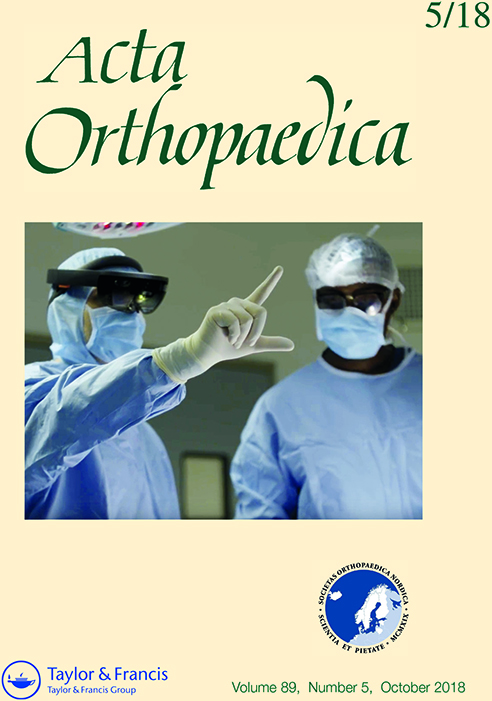Anterior distal femoral hemiepiphysiodesis can reduce fixed flexion deformity of the knee: a retrospective study of 83 knees
DOI:
https://doi.org/10.1080/17453674.2018.1485418Abstract
Background and purpose — Fixed knee flexion deformity in children is a common problem in various diseases including myelomeningocele and cerebral palsy. Until now, only a few studies focusing on the surgical procedure of anterior distal femoral hemiepiphysiodesis have been published. We analyzed outcome and correction rate in the largest case series to date of patients treated by staples or 8-plates. Patients and methods — We reviewed the medical records of all patients with fixed knee flexion deformity who were treated with anterior distal femoral hemiepiphysiodesis using either staples or 8-plates between the years 2002 and 2017 (73 patients; 130 knees). 49 patients (83 knees) had completed treatment with implant removal at the time of full correction of the deformity or at skeletal maturity and were included. The average age at operation was 12 years (6–20). Patients were assigned to 3 different groups based on their diagnosis: cerebral palsy, myelomeningocele, and the “other” group.d Results — Mean fixed knee flexion deformity improved from 21° (10–60°) to 8° (0–50°) (p < 0.001) with an average correction rate of 0.44° per month (range –2.14° to 1.74°). The correction rate per month was lowest for patients with cerebral palsy (0.20°), followed by the myelomeningocele group (0.50°), and the “other” group (0.58°). Implant loosening occurred in 10% of the treated knees with consecutive re-implantation in 5% of the cases. Interpretation — Anterior distal femoral hemiepiphysiodesis is an effective and safe method for the treatment of fixed knee flexion deformity in children. The optimal timing depends on the remaining individual growth potential, the underlying disease, and the extent of the deformity.Downloads
Download data is not yet available.
Downloads
Published
2018-09-03
How to Cite
Stiel, N., Babin, K., Vettorazzi, E., Breyer, S., Ebert, N., Rupprecht, M., … Spiro, A. S. (2018). Anterior distal femoral hemiepiphysiodesis can reduce fixed flexion deformity of the knee: a retrospective study of 83 knees. Acta Orthopaedica, 89(5), 555–559. https://doi.org/10.1080/17453674.2018.1485418
Issue
Section
Articles
License
Copyright (c) 2018 Norbert Stiel, Kornelia Babin, Eik Vettorazzi, Sandra Breyer, Nicola Ebert, Martin Rupprecht, Ralf Stuecker, Alexander S Spiro

This work is licensed under a Creative Commons Attribution 4.0 International License.
Acta Orthopaedica (Scandinavica) content is available freely online as from volume 1, 1930. The journal owner owns the copyright for all material published until volume 80, 2009. As of June 2009, the journal has however been published fully Open Access, meaning the authors retain copyright to their work. As of June 2009, articles have been published under CC-BY-NC or CC-BY licenses, unless otherwise specified.







